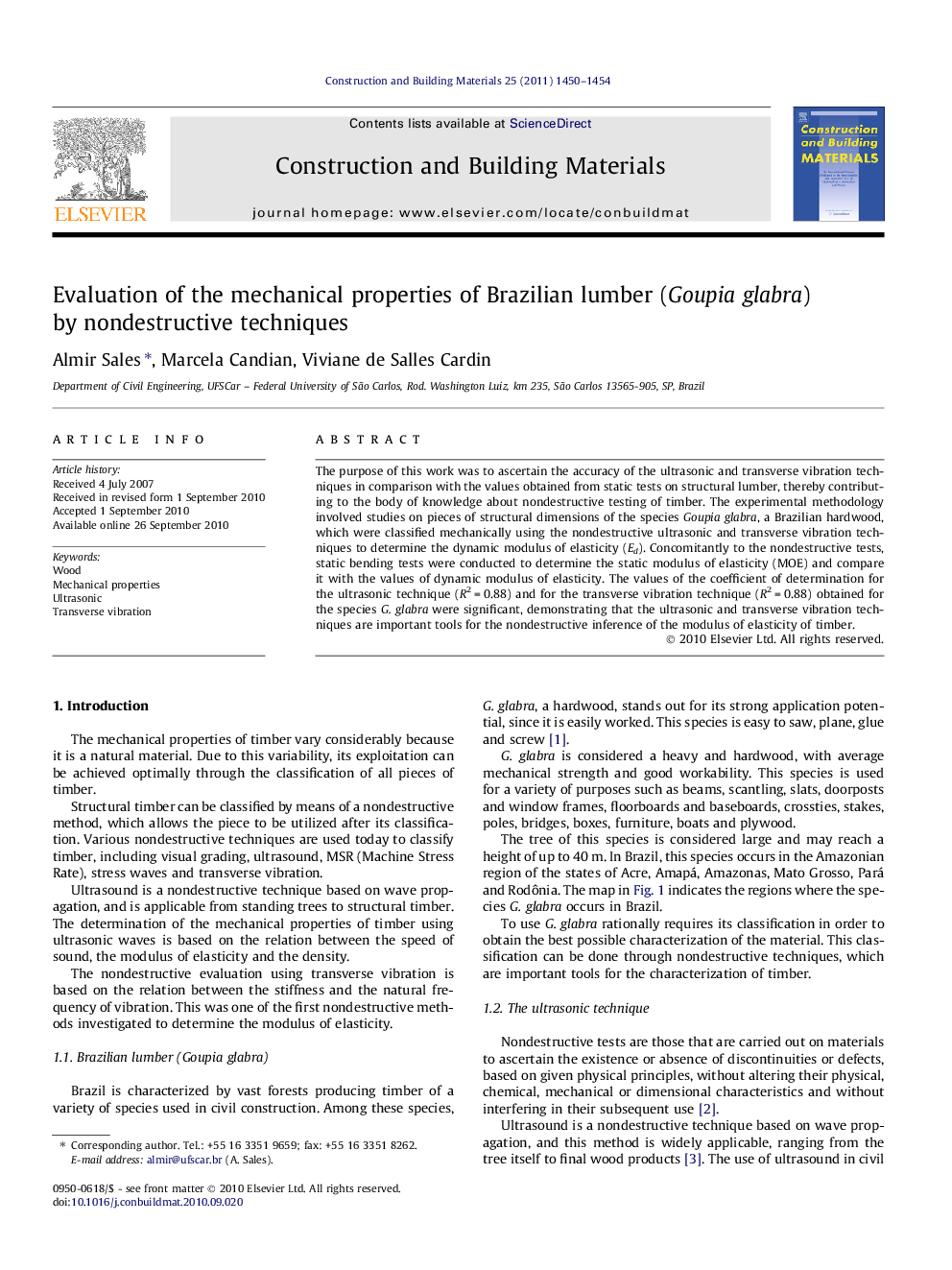| Article ID | Journal | Published Year | Pages | File Type |
|---|---|---|---|---|
| 260073 | Construction and Building Materials | 2011 | 5 Pages |
The purpose of this work was to ascertain the accuracy of the ultrasonic and transverse vibration techniques in comparison with the values obtained from static tests on structural lumber, thereby contributing to the body of knowledge about nondestructive testing of timber. The experimental methodology involved studies on pieces of structural dimensions of the species Goupia glabra, a Brazilian hardwood, which were classified mechanically using the nondestructive ultrasonic and transverse vibration techniques to determine the dynamic modulus of elasticity (Ed). Concomitantly to the nondestructive tests, static bending tests were conducted to determine the static modulus of elasticity (MOE) and compare it with the values of dynamic modulus of elasticity. The values of the coefficient of determination for the ultrasonic technique (R2 = 0.88) and for the transverse vibration technique (R2 = 0.88) obtained for the species G. glabra were significant, demonstrating that the ultrasonic and transverse vibration techniques are important tools for the nondestructive inference of the modulus of elasticity of timber.
